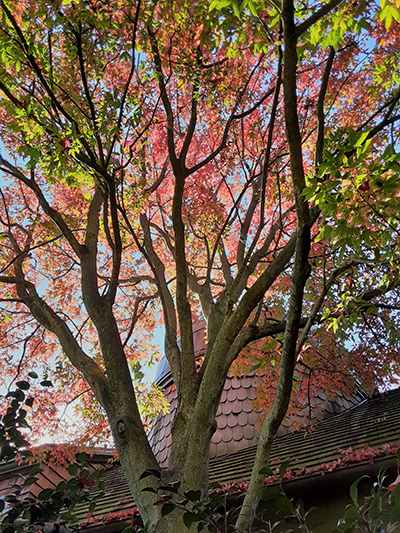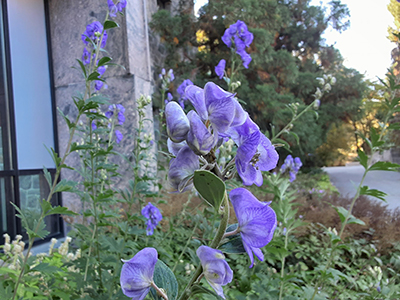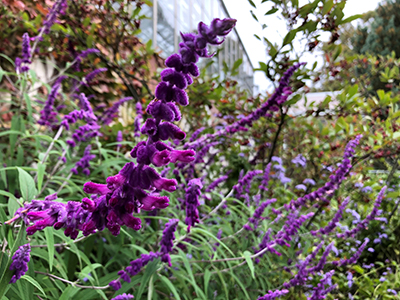
Plant of the Week: October 26

Acer mandshuricum, the Manchurian maple, is a small rare maple native to China, Korea, and Russia. A trifoliate maple, A. mandshuricum has foliage similar in appearance to Acer griseum and Acer triflorum, though lacking their exfoliating bark. The bark of A. mandschuricum is smooth and gray, making it easy to distinguish these similar species. Though overshadowed by A. griseum and A. triflorum, this uncommon maple is quite ornamental in its own right.
Developing fall color earlier than most Asian maples, A. mandshuricum foliage turns rosy red, pink and orange in early October. Like it’s more common relatives, this tree remains small in stature in cultivation; A. mandschuricum usually grows to about 20’, with mature landscape specimens reaching upwards of 40’ and wild plants growing much larger.
The preferences of A. mandschuricum are closely aligned with those of other trifoliate maples as well: moist, well-drained soil in full sun to part-shade is ideal; this tree is hardy to USDA zone 4b. A. mandchuricum makes a lovely specimen, and fits well into tight spaces in the garden. A handsome specimen resides against the side of the Cunningham House, showing off its dazzling fall color. photo credit: R. Payne-Meyer

Monkshood (Aconitum spp.) are a reliable hit in the garden tying late summer into fall. Large, blue-purple flowers sit atop sturdy stems, rising above the foliage. The long stems and unique flowers make it a suitable choice for a cut flower. Boasting dark-green palmate leaves, it looks great prior to the arrival of the much-coveted blue-hued flowers. Aconitum plants are a bit picky regarding growing conditions, preferring constantly moist, but not soggy, organically rich soil. Aconitum roots prefer cool soil. Plants grow best in full sun to part-shade, with part-shade being most ideal, especially in warmer climates. Aconitum clumps will spread by tubers, though they are often initially slow to establish. The parts of Aconitum spp. are highly poisonous, especially roots and tubers, so be wary of planting where curious pets and children may be.
Aconitum sp. PMD, is a selection from Philip McDougal, bred in Taiwan. A. sp. PMD is smaller than typical Aconitum, growing 2-3’ tall, thus reducing the number of stems snapped by bearing too much weight high upon the stem. The smaller size also allows for use among smaller groundcovers. Aconitums often suffer broken stems when in flower and typical monkshoods usually require staking earlier in the summer. A. sp. PMD can be found growing on the North side of Kohlberg Hall, putting on a lovely flowering display amidst a mix of other low-growing plants. photo credit: R. Payne-Meyer

Salvia leucantha is another purplish-blue flower that is a uniquely autumn treat. This plant may seem an inconspicuous mound in the summer, but it really pulls its weight in the garden come fall. Offering thin, lanceolate leaves with whitish undersides, foliage is attractive by itself, though greatly enhanced by the addition of flower spikes. Beginning to flower in the cool days of late summer and lasting through frost, this Salvia produces a profusion of soft-textured, colorful flowers. A velvety appearance and two-toned blooms make the purple-blue flower spikes of S. leucantha a truly special sight. The long-lasting flowers and sturdy stems make this another great cut flower. The flowers also attract bees, birds, and hummingbirds!
Known commonly as Mexican bush sage, S. leucantha indeed takes on a bush-like form, growing 4-6’ tall, so when planting leave some room for plants to fill out. Easy to grow, this sun-lover prefers moist, well-drained soil, but tolerates average soils and drought conditions. Hardy to zone 8, this Salvia is effectively an annual plant in our zone 7, but well worth your investment for the punch it packs at this time of the year! photo credit: R. Payne-Meyer





No Comments